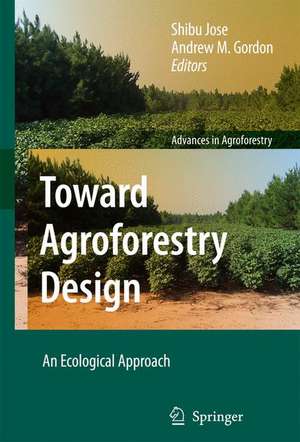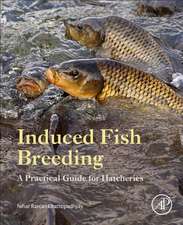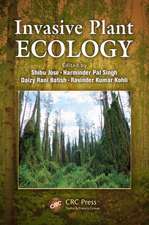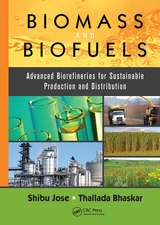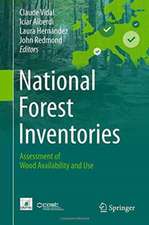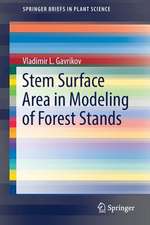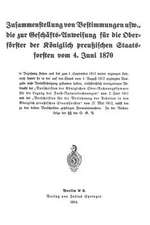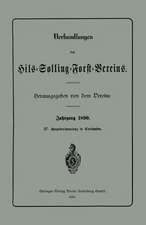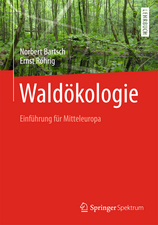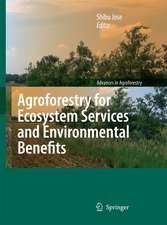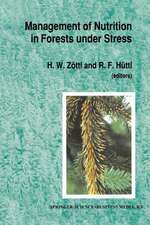Toward Agroforestry Design: An Ecological Approach: Advances in Agroforestry, cartea 4
Editat de Shibu Jose, Andrew M. Gordonen Limba Engleză Hardback – 2 ian 2008
Drawing together a wide range of examples from around the world, the book highlights how recent developments in agroforestry research can contribute to understanding agroforestry system function, and discusses the potential application of agroforestry in addressing a range of land use challenges in both tropical and temperate regions of the world.
Including both original research and synthetic analyses, the book presents examples from a wide range of environments. It focuses largely on resource allocation – both above- and below-ground – including an assessment of the recent advances in analytical and modeling tools available to this work. Concluding with a synthesis of the key questions and research gaps highlighted throughout the text, the book will be particularly useful to students and researchers involved in natural resource management, agroforestry, and applied ecology.
| Toate formatele și edițiile | Preț | Express |
|---|---|---|
| Paperback (1) | 1381.43 lei 6-8 săpt. | |
| SPRINGER NETHERLANDS – 22 noi 2010 | 1381.43 lei 6-8 săpt. | |
| Hardback (1) | 1388.85 lei 6-8 săpt. | |
| SPRINGER NETHERLANDS – 2 ian 2008 | 1388.85 lei 6-8 săpt. |
Preț: 1388.85 lei
Preț vechi: 1693.71 lei
-18% Nou
Puncte Express: 2083
Preț estimativ în valută:
265.75€ • 277.47$ • 219.95£
265.75€ • 277.47$ • 219.95£
Carte tipărită la comandă
Livrare economică 04-18 aprilie
Preluare comenzi: 021 569.72.76
Specificații
ISBN-13: 9781402065712
ISBN-10: 140206571X
Pagini: 312
Ilustrații: X, 314 p.
Dimensiuni: 155 x 235 x 18 mm
Greutate: 0.67 kg
Ediția:2008
Editura: SPRINGER NETHERLANDS
Colecția Springer
Seria Advances in Agroforestry
Locul publicării:Dordrecht, Netherlands
ISBN-10: 140206571X
Pagini: 312
Ilustrații: X, 314 p.
Dimensiuni: 155 x 235 x 18 mm
Greutate: 0.67 kg
Ediția:2008
Editura: SPRINGER NETHERLANDS
Colecția Springer
Seria Advances in Agroforestry
Locul publicării:Dordrecht, Netherlands
Public țintă
ResearchCuprins
Ecological Knowledge and Agroforestry Design: An Introduction.- Resource Allocation in Agroforestry Systems: Aboveground Processes.- Biophysical Changes Resulting from 16 Years of Riparian Forest Rehabilitation: An Example from the Southern Ontario Agricultural Landscape.- Ecological Development and function of Shelterbelts in Temperate North America.- Forage Production Under and Adjacent to Robinia pseudoacacia in Central Appalachia, West Virginia.- Light Intensity Effects on Growth and Nutrient-use Efficiency of Tropical Legume Cover Crops.- Interspecific Competition in a Pecan-cotton Alley-cropping System in the Southern United States: Is Light the Limiting Factor?.- Modification of Microclimate and Associated Food Crop Productivity in an Alley-cropping System in Northern Sudan.- Tree–Crop Interactions in Fruit Tree-based Agroforestry Systems in the Western Highlands of Guatemala: Component Yields and System Performance.- Biophysical Interactions Between Timber Trees and Arabica Coffee in Suboptimal Conditions of Central America.- Resource Allocation in Agroforestry Systems: Belowground Processes.- Agroforestry Management Effects on Plant Productivity Vectors within a Humid–Temperate Hardwood Alley-cropping System.- Root Competition for Phosphorus Between Coconut Palms and Interplanted Dicot Trees Along a Soil Fertility Gradient in Kerala, India.- Establishment of Cordia dodecandra A.DC. with Bixa orellana L. on Calcareous Soils in Yucatán, Mexico.- Tree Foliage Polyphenols and Nitrogen Use in Crop–Livestock Systems of Southern Africa: Strategies for Increasing Efficiency.- Towards Better Understanding: Analytical and Modeling Tools for Agroforestry Research.- The Role of Ecosystem-level Models in the Design of Agroforestry Systems for Future EnvironmentalConditions and Social Needs.- Radiation Availability in Agroforestry System of Coffee and Rubber Trees.- Modeling Green Manure Additions in Alley-Cropping Systems: Linking Soil Community Dynamics and Nitrogen Mineralization.- Separating the Tree–Soil–Crop Interactions in Agroforestry Parkland Systems in Saponé (Burkina Faso) using WaNuLCAS.- Synthesis.- Applying Ecological Knowledge to Agroforestry Design: A Synthesis.
Recenzii
From the reviews:
"This book, and indeed, the series in which it appears, ‘Advances in Agroforestry,’ is intended ‘to offer state-of-the-art’ information on diverse topics related to agroforestry. Editors Jose (Univ. of Florida, Gainesville) and Gordon (Univ. of Guelph, Ontario), focus on plot design and ecological factors that might be considered when setting up areas in which these techniques are to be applied. … The book forms a reference point for future research; it is a technical presentation. Summing Up: Recommended. Researchers/faculty and professionals." (D. H. Pfister, CHOICE, Vol. 46 (01), September, 2008)
"This book, and indeed, the series in which it appears, ‘Advances in Agroforestry,’ is intended ‘to offer state-of-the-art’ information on diverse topics related to agroforestry. Editors Jose (Univ. of Florida, Gainesville) and Gordon (Univ. of Guelph, Ontario), focus on plot design and ecological factors that might be considered when setting up areas in which these techniques are to be applied. … The book forms a reference point for future research; it is a technical presentation. Summing Up: Recommended. Researchers/faculty and professionals." (D. H. Pfister, CHOICE, Vol. 46 (01), September, 2008)
Textul de pe ultima copertă
Jose and Gordon’s Toward Agroforestry Design is an important reference for anyone interested in exploring or managing the physiological and ecological processes which underlie resource allocation and plant growth in agroforestry systems.
Drawing together a wide range of examples from around the world, the book highlights how recent developments in agroforestry research can contribute to understanding agroforestry system function, and discusses the potential application of agroforestry in addressing a range of land use challenges in both tropical and temperate regions of the world.
Including both original research and synthetic analyses, the book presents examples from a wide range of environments. It focuses largely on resource allocation – both above- and below-ground – including an assessment of the recent advances in analytical and modeling tools available to this work. Concluding with a synthesis of the key questions and research gaps highlighted throughout the text, the book will be particularly useful to students and researchers involved in natural resource management, agroforestry, and applied ecology.
Drawing together a wide range of examples from around the world, the book highlights how recent developments in agroforestry research can contribute to understanding agroforestry system function, and discusses the potential application of agroforestry in addressing a range of land use challenges in both tropical and temperate regions of the world.
Including both original research and synthetic analyses, the book presents examples from a wide range of environments. It focuses largely on resource allocation – both above- and below-ground – including an assessment of the recent advances in analytical and modeling tools available to this work. Concluding with a synthesis of the key questions and research gaps highlighted throughout the text, the book will be particularly useful to students and researchers involved in natural resource management, agroforestry, and applied ecology.
Caracteristici
Excellent coverage of recent advances in ecological knowledge in agroforestry systems Covers both temperate and tropical regions of the world Separate sections to cover aboveground resource allocation and ecological processes, belowground processes and resource use, and modelling and analytical tools Synthesis chapter that identifies knowledge gaps
